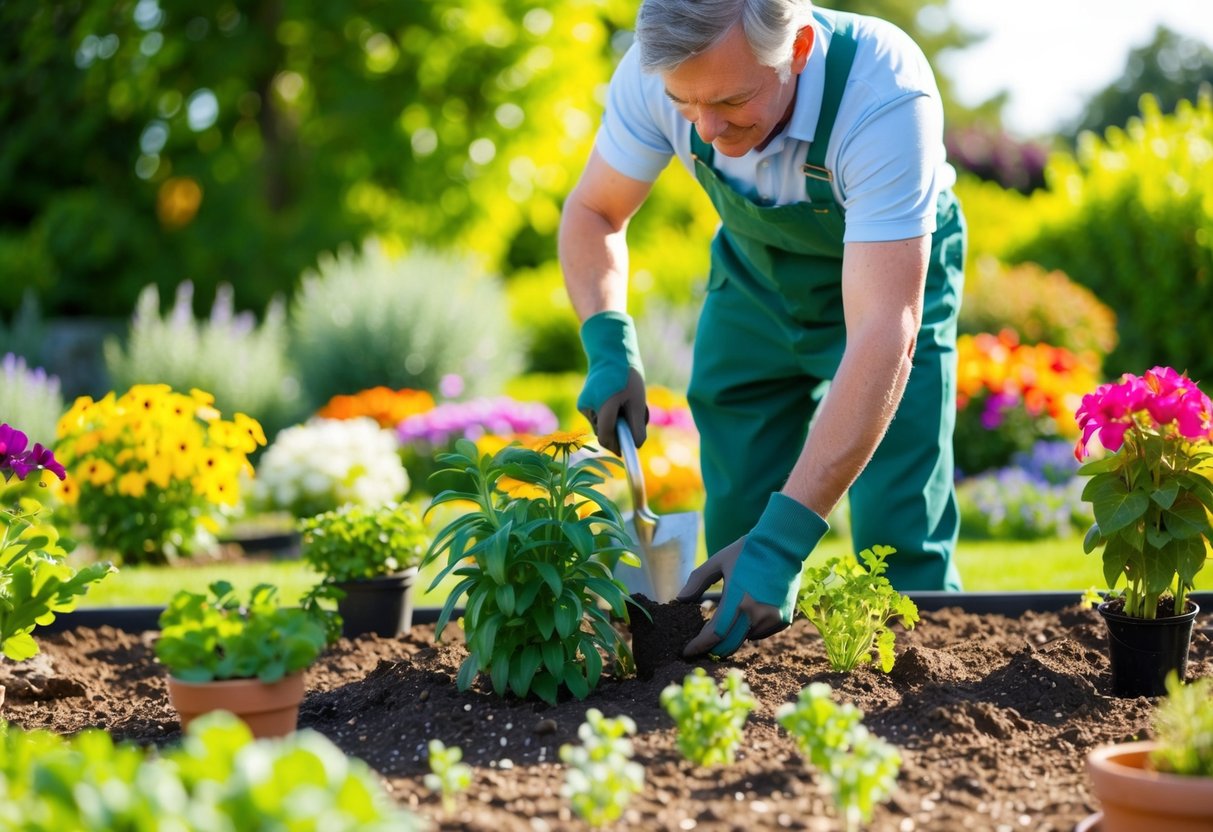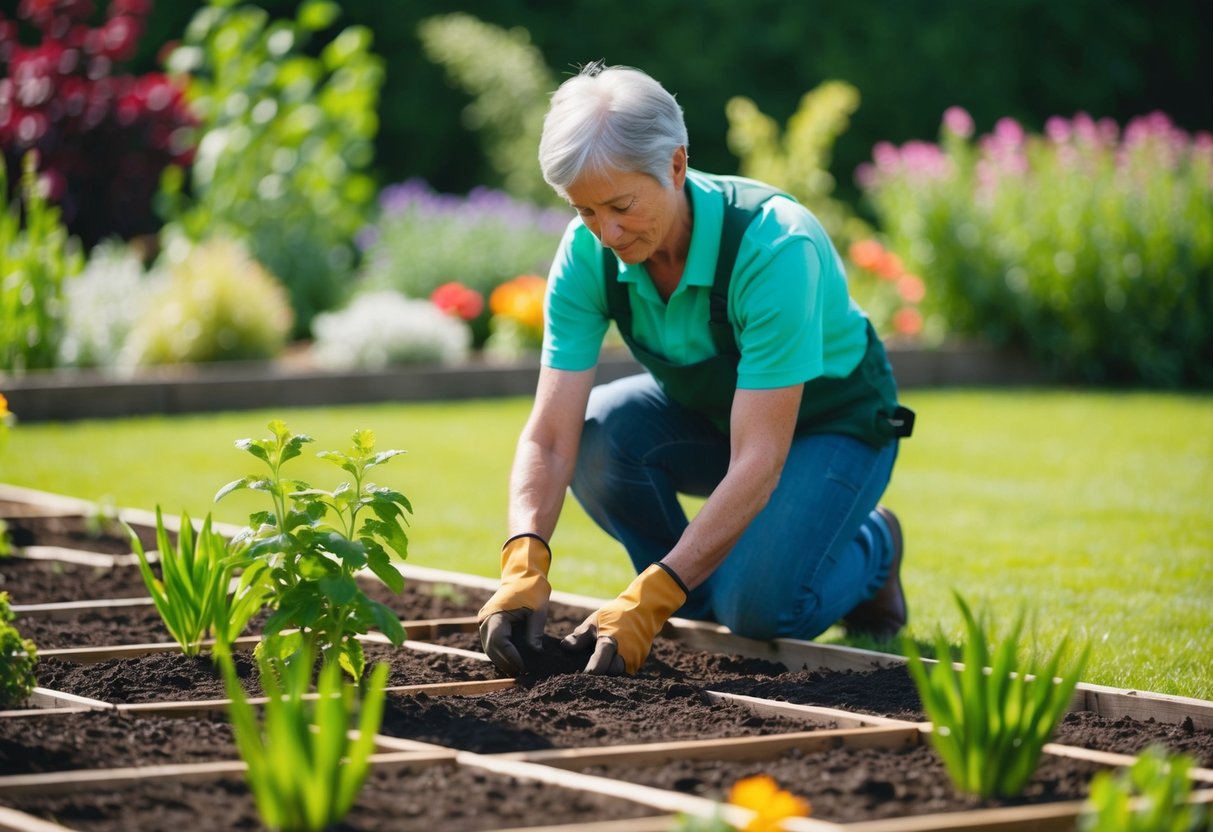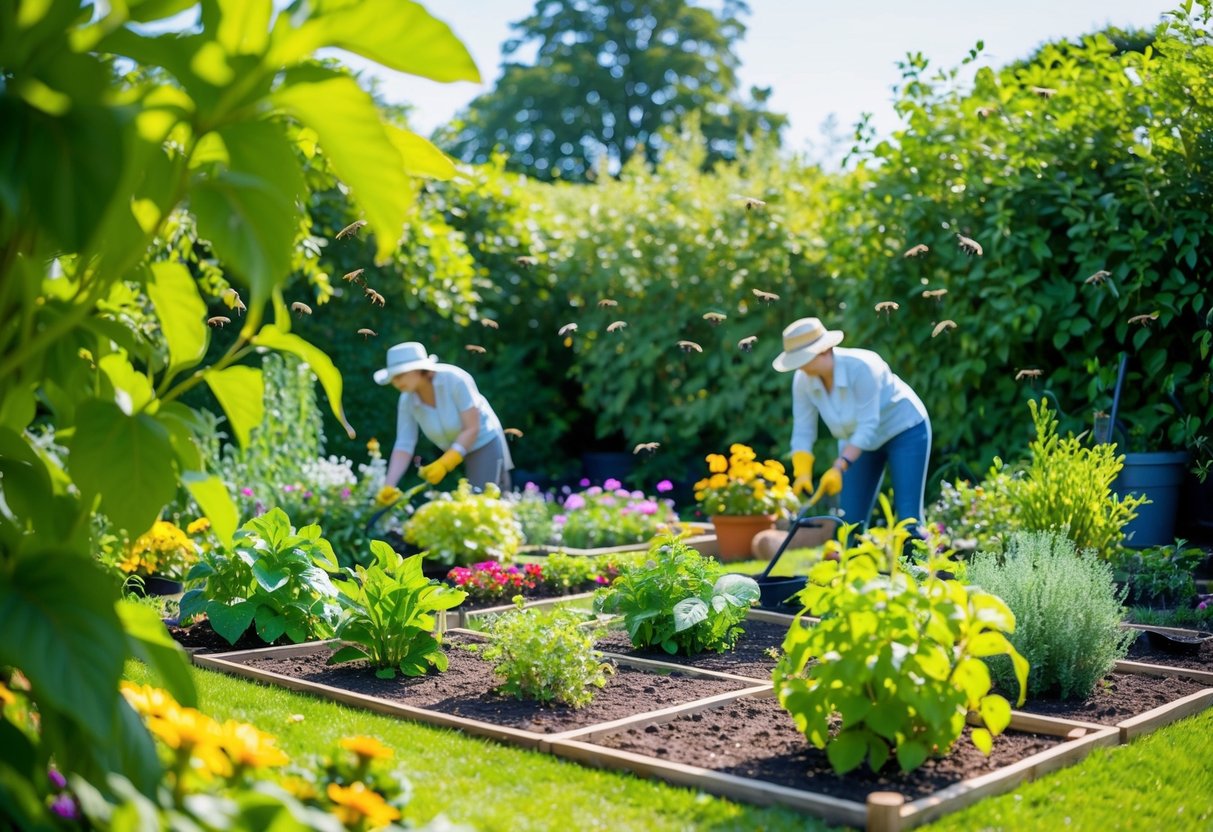Can I Plant Bedding Plants in June? Yes, Here’s How!
Thinking about whether you can plant bedding plants in June? Good news! Many varieties of bedding plants can be planted this month. The key factor is the reduced risk of frost, especially in most areas of the UK, making June an ideal time to start your gardening adventure.

Bedding plants offer vibrant colors and can last throughout summer. Types like petunias and sweet peas are popular choices and provide beautiful displays in gardens. Just make sure the specific plants you choose are suited to your climate and conditions. For more tailored advice, check out Ideal Home’s guide.
Whether you’re filling hanging baskets or brightening up garden beds, the task can be both fun and rewarding. So, grab those gloves and get ready to make your garden pop! June is a great time to get those bedding plants into the soil.
Planning Your Summer Garden

Planning your summer garden involves choosing suitable bedding plants and designing your space to maximize color and texture. It’s essential to know how to create a vibrant, eye-catching garden that highlights seasonal plants in both sunny and shaded areas.
Choosing the Right Bedding Plants
Select plants that thrive in your garden conditions. For sunny spots, consider petunias and geraniums. Both flourish in full sun, offering bright colors. In shaded areas, busy lizzies and begonias are ideal, adding bursts of color where sunlight is limited. Remember that begonias are toxic to pets, so plan accordingly if you have furry friends around.
Check plant labels or descriptions for information about sun and shade preferences, ensuring the best results in your outdoor space.
Designing with Color and Texture
Incorporate a mix of colors and textures to create visually appealing garden borders. Use contrasting colors like bright blues and oranges to make a statement.
Organize plants by height, placing taller ones like Nicotiana sylvestris at the back of borders. This helps create depth.
Consider a cottage garden style for a whimsical look, mixing various bloom shapes and foliage. Use paths or seating areas to enjoy your garden from different angles, enhancing the experience with fragrant plants.
Planning with color and texture will bring your garden to life, making it a lively and inviting space for the summer months.
Getting Down to Planting

Planting bedding plants in June can add vibrant colors to your garden. You’ll need to prepare the soil carefully and use the right techniques to ensure your plants thrive.
Preparing the Soil
Before you start planting, it’s important to get the soil ready. First, clear away any weeds or debris from your flower beds. You want your plants to have plenty of room to grow.
Next, loosen the soil using a garden fork or tiller. This helps air and water reach the roots easily.
Mix in compost to enrich the soil. Compost provides essential nutrients that help your bedding plants flourish. For plants like geraniums and petunias, aim for a mix that’s well-draining. This prevents water from sitting around the roots, which can cause problems like root rot.
Check the pH level of your soil. Many bedding plants prefer a slightly acidic to neutral pH, around 6.0 to 7.0. You can adjust this with lime or sulfur if needed.
Planting Techniques
When you’re ready to plant, dig holes that are just big enough to fit the root ball of your bedding plants. For plug plants such as marigolds, space them about 6-12 inches apart. This gives them enough space to grow without competing for resources.
Gently place each plant in its hole and fill in with loosened soil. Press the soil gently around the base to remove air pockets.
Water generously right after planting. This helps settle the soil and gives the roots a good start.
It’s wise to water early in the morning or late in the afternoon. This way, the water doesn’t evaporate too quickly in the sun.
Keep an eye on your plants in the following weeks and water them whenever the soil feels dry.
Caring for Your Bedding Plants

Keeping your bedding plants healthy involves regular watering and feeding. They need the right amount of attention to thrive and look vibrant throughout the season. Here’s how you can care for them effectively.
Watering Essentials
Watering is crucial for keeping your plants alive and vibrant. Regular watering is necessary, especially during hot months.
It’s best to water early in the morning or late in the afternoon to prevent evaporation. Make sure the water reaches the roots by watering deeply.
Tip: Some plants are drought tolerant, meaning they can survive with less water. Check if your plants fall into this category. For plants that need more frequent watering, keep an eye on their soil and leaves.
Feeding and Maintenance
Plant health can improve significantly with the right feeding and maintenance.
Fertilize your plants every couple of weeks using a balanced liquid fertilizer. You can find many options at your local garden center that cater to specific plant needs.
Maintenance includes tasks like removing dead flowers, known as deadheading. This encourages new blooms and keeps plants looking tidy.
Some bedding plants are labeled as low maintenance, meaning they require less attention in the long run.
Keep in mind that feeding and maintenance are essential for strong plant growth. Small actions like feeding and deadheading can lead to a thriving garden full of beautiful blooms.
Creative Displays with Containers

Using containers for planting in June can add a splash of color to your garden. Hanging baskets and window boxes are space-saving options, while pots offer versatility. Each choice allows for creative arrangements with plants like geraniums and lobelia.
Hanging Baskets and Window Boxes
Hanging baskets and window boxes are excellent for small spaces. They can hang from porches or rest on window sills, brightening up any area.
Busy Lizzies and sweet peas are great choices due to their vibrant blooms.
To start, use a mixture of potting soil and plant food. Choose a variety of trailing plants like lobelia and verbena for a burst of color.
Water regularly to keep flowers blooming throughout the summer.
Consider adding a layer of mulch to retain moisture. With consistent care, these displays are perfect for summer-long color, making every window and porch inviting.
Pots and Containers
Pots and containers are versatile, providing control over the plant arrangement. This allows you to mix different species in one container for a vibrant display.
Choose containers that suit your garden style, whether rustic or modern.
Use geraniums as focal points, pairing them with trailing plants like lobelia.
Pots can be grouped together for a striking effect or placed in different locations to fill empty spaces.
When planting, ensure proper drainage by using pots with holes. A combination of potting soil and fertilizer will promote growth.
Arrange your pots near entryways or garden paths to create a welcoming atmosphere that lasts all summer.
Encouraging Biodiversity

Adding biodiversity to your garden enhances its beauty and health. By attracting pollinators and adopting eco-friendly practices, you make your space vibrant and supportive of wildlife. Plants like Begonia, Snapdragon, and Rudbeckia not only brighten your garden but also invite beneficial creatures.
Attracting Pollinators
Pollinators like bees and butterflies are essential for a thriving garden. You can encourage these helpful visitors by planting a variety of flowers.
Consider adding Sweet Peas, Cosmos, and Californian Poppy. These not only add color but attract a wide array of pollinators.
Planting Perennials and Biennials ensures that your garden blooms across different seasons, providing continuous food sources.
Pelargonium and other drought-tolerant options are excellent choices for consistency and resilience.
Encourage nesting by leaving some ground exposed and providing water sources.
Eco-Friendly Practices
Eco-friendly gardening helps maintain a healthy and sustainable garden. Start by using organic fertilizers and pest controls. These will keep your garden chemical-free and safe for wildlife.
Incorporating native plants such as Rudbeckia can reduce water needs and help local ecosystems.
Creating habitats for various creatures boosts biodiversity. Add features like logs or small rock piles to welcome beneficial wildlife.
Consider rain gardens to manage water use effectively. This is particularly useful for drought-tolerant plants.
These practices not only support a thriving garden but also contribute positively to the environment.







